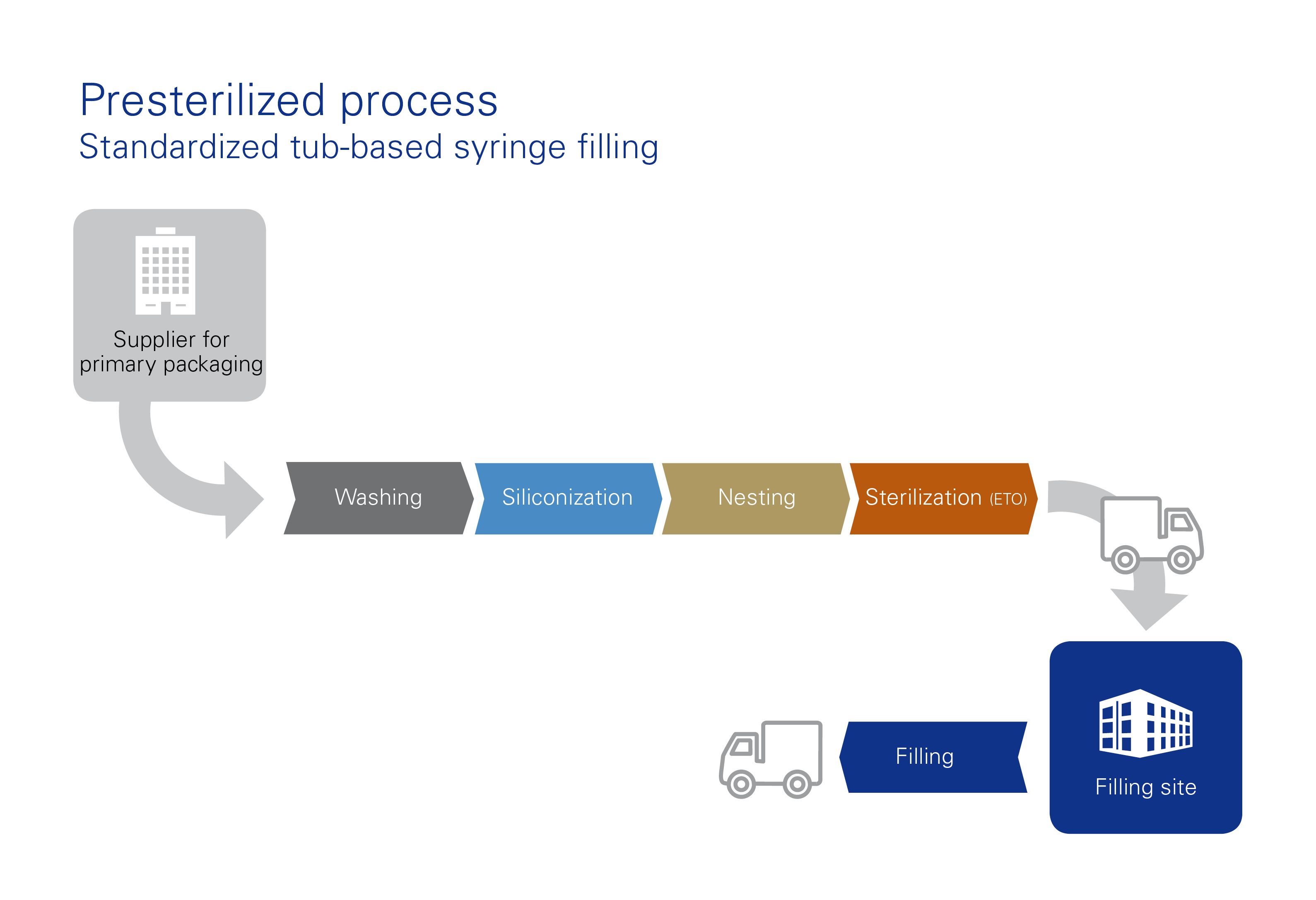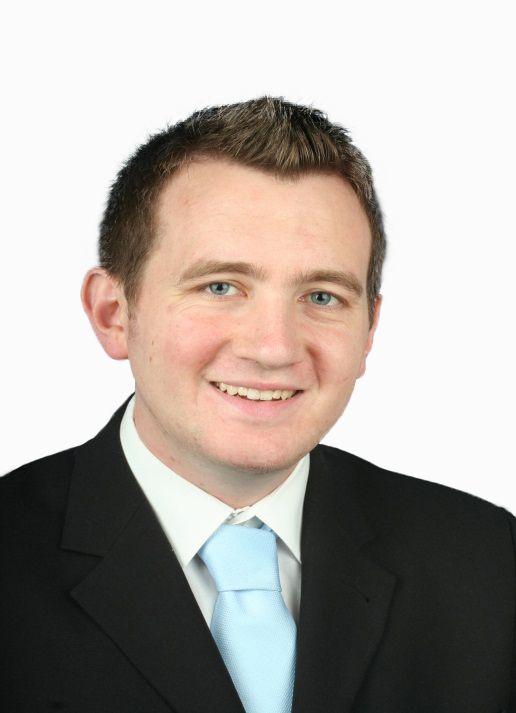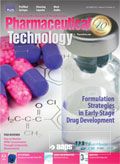A Closer Look at Prefilled Syringes
Choosing between presterilized and bulk sterilized prefilled syringes.
Jose Angel Astor Rocha/shutterstock.com

Increased competition among leading brands of injectable drugs, in particular, complex biologics, are driving the need for innovative delivery options and other advantages that can support product differentiation. Such a difference in drug-delivery systems can also act as a valuable lifecycle management strategy, helping bio/pharmaceutical companies succeed in an increasingly competitive environment. While vials remain the established and proven drug-delivery system and continue to dominate the market, prefilled syringes are on the rise. In fact, it is estimated that the market for prefilled syringes will double in size within the next decade (1).
The prefilled syringe market is driven by the rapid growth in innovative and targeted molecular entities such as monoclonal antibodies (mAbs), interferons, peptides, vaccines, and ophthalmics, for which prefilled syringes are a suitable drug-delivery system. Additionally, the rising levels of chronic diseases and cancers have led to a significant increase in the use of injectable drugs. Adding to these key drivers is the substantial growth in biosimilars, which are estimated to reach $55 billion in global sales by 2020, versus $20 billion in 2015 (2).
Exploring the advantages of prefilled syringes
The global prefilled syringe market is also growing due to the need for a greater degree of safety and ease of administration for patients and healthcare workers. Prefilled syringes are easy to use and only have a few administrative steps, which can improve safety by reducing the potential for contamination, needle stick injuries, and dosing errors. These attributes can also improve patient compliance and dose consistency. The wider adoption of integrated prefilled syringes featuring advanced innovative, single-unit dose delivery systems such as autoinjectors results in less waste of valuable API, lower risk of dosing errors, and lower risk of misuse of leftover product. Prefilled syringes can also attract higher drug reimbursement from payers and increase the value of a product early in its lifecycle by providing a competitive edge. Finally, prefilled syringes can increase the attractiveness of a product to out-licensing partners and improve clinical trial validity and appeal.
Sensitive biologics require the right delivery system
Complex biological-based compounds such as mAbs require special consideration during formulation for a prefilled syringe presentation. For example, compatibility is often a hurdle due to the number of additional components in a prefilled system, such as stoppers or closure systems, and the need to maintain the functionality as well as the shelf life of the product. Tungsten, silicone oil, and adhesives used to secure the needle in the glass barrel can potentially react with sensitive drug products and result in unexpected impurities.
- When choosing the right drug-delivery system, specific product characteristics must also be taken into account. These include:
- Is the product liquid or lyophilized?
- What are the therapy requirements
- Is the therapy self-administered?
- What is the duration of therapy?
- What is the nature of the market (i.e., product lifecycle, cost, competition, etc.)?
The choice between presterilized or bulk platform
Particularly for sensitive biologics or complex compounds with high product specifications, choosing the right syringe platform technology is of great importance. There are two prefilled syringe platforms available in the market: presterilized and bulk syringes. Knowing which one is the right choice for a compound is usually determined by the specific characteristics of the compound itself.
Presterilized syringes are tub-based, ready-to-use systems and are ideal for a broad range of drug products. The washing, siliconization, nesting, and sterilization take place at the supplier for the primary packaging while filling occurs at the filling site (see Figure 1).
Figure 1: Example of a presterilized syringe filling process. Figure courtesy of Vetter.

When working with sensitive biologics, customization is often desired. Bulk syringes are, therefore, a good option for complex compounds such as mAbs, peptides, interferons, vaccines, or opthalmics. As opposed to presterilized syringes, the pre-treatment steps of washing, siliconization, and sterilization take place at the filling site in a fully integrated, customizable inline-process (see Figure 2). This setup results in maximum control of the process and flexible primary packaging material combinations.
Figure 2: Example of a bulk syringe filling process. Figure courtesy of Vetter.

The tighter specifications of the bulk process also help reduce particle levels. Silicone levels can be adjusted to meet product requirements and different methods of sterilization can be offered. The flexibility also increases dosing and fill-volume accuracy for small volumes. A full range of readily available bulk syringe formats allow for numerous customizable options.
A case study of dealing with a complex compound
The following case study is an example of how the many challenges of sensitive biologics can be overcome and incorporated into a development program utilizing prefilled syringes.
Recently, a contract development and manufacturing organization (CDMO) was approached to support a bio/pharmaceutical company in developing a specific filling process for a complex mAb compound in a bulk syringe. The main project requirements were:
- Very low filling volume as the product is injected directly into the eye
- High requirements from regulatory authorities to reduce the silicone level to a minimum
- Requirement for a gas-tight system to enable an external sterilization process of the filled syringe.
The compound presented several challenges in achieving these requirements. To reduce the silicone levels of the glass barrels and stoppers, the CDMO employed a static siliconization and customized a bulk, baked-in siliconization process. Static siliconization offers a high amount of precision with the ability to adjust silicone levels. During the siliconization process, there is no contact between the silicone nozzle and the glass barrel, which is an important criteria for some specific indication areas such as ophthalmic medications. Baked-in siliconization is the process of the siliconized syringe undergoing dry heat sterilization. Due to the high temperature, the silicone oil is baked into the syringe, thereby minimizing the risk of loose silicone oil droplets coming into contact with the drug substance. In addition, non-siliconized equipment was used so that the lowest possible amount of silicone oil was used in the process for the siliconization of the packaging materials.
Because the requested product is of high value and concentration, it was necessary to evaluate the liquid pathway to minimize line losses. Thus, ideal positions for the filling components, such as the fill tank or the filter, were defined. To minimize particle levels in the filling process, it was also important to check the support system. Tighter specifications on particle levels for Tyvek bags used for stoppers and other equipment were defined. In addition, abrasion was minimized in the stoppering and static washing processes of the glass barrels.
Achieving outside sterility for use in an operation theatre was overcome through the use of a syringe with a tamper-evident closure system (e.g., V-OVS from Vetter) with reduced gas permeability and higher system tightness, avoiding reaction between the product and the ethylene oxide (ETO) gas during outside sterilization. Finally, the gas-tight rubber components in the closure part made an outer sterilization of the syringe with ETO possible.
During the assembly process, specifications were developed for precise backstop placement with 100% camera control, which avoided incorrect movement of the stopper in the non-sterile area during sterilization. Also, intensive investigation around reproducibility of the stopper position, in-process control (IPC) of filled syringes instead of empty syringes, and 100% camera control at the customer helped to overcome this challenge.
In this particular case, the specific and highly complex compound required a high degree of flexibility and customization, such as a minimum level of silicone in combination with baked-in siliconization. Thus, its requirements were fulfilled by using the bulk process.
Bulk and prefilled syringes offer innovation and value
Prefilled syringes platforms-both presterilized and bulk-offer innovative delivery options and value in sensitive biologics drug development programs. They also have distinct advantages in helping support product differentiation and lifecycle management strategies. The nature of the compound will often drive the choice, but knowing how the two platforms differ will be essential in choosing the right syringe system for the individual drug product.
References
1. Visiongain Report, “Pre-Filled Syringes and Related Systems: World Market Outlook 2014–2024,” www.visiongain.com/Report/1149/Pre-Filled-Syringes-World-Industry-and-Market-Prospects-2014-2024, accessed Oct. 4, 2017.
2. GBI Research, CBR Pharma Insights Report, “Biosimilars-Regulatory Framework and Pipeline Analysis,” www.gbiresearch.com/report-store/market-reports/cbr-pharma-insights/biosimilars-regulatory-framework-and-pipeline-analysis, accessed
Oct. 4, 2017.
Kevin J. Wrigley is product and service manager, Vetter Pharma International GmbH.

About the author
Kevin J. Wrigley is product and service manager, Vetter Pharma International GmbH.
Article Details
Pharmaceutical Technology
Vol. 41, No. 10
Page: 32–35
Citation
When referring to this article, please cite it as K. Wringley, “A Closer Look at Prefilled Syringes,” Pharmaceutical Technology 41 (10) 32–35 (2017).

Drug Solutions Podcast: A Closer Look at mRNA in Oncology and Vaccines
April 30th 2024In this episode fo the Drug Solutions Podcast, etherna’s vice-president of Technology and Innovation, Stefaan De Koker, discusses the merits and challenges of using mRNA as the foundation for therapeutics in oncology as well as for vaccines.
Drug Solutions Podcast: Applying Appropriate Analytics to Drug Development
March 26th 2024In this episode of the Drug Solutions Podcast, Jan Bekker, Vice President of Business Development, Commercial and Technical Operations at BioCina, discusses the latest analytical tools and their applications in the drug development market.